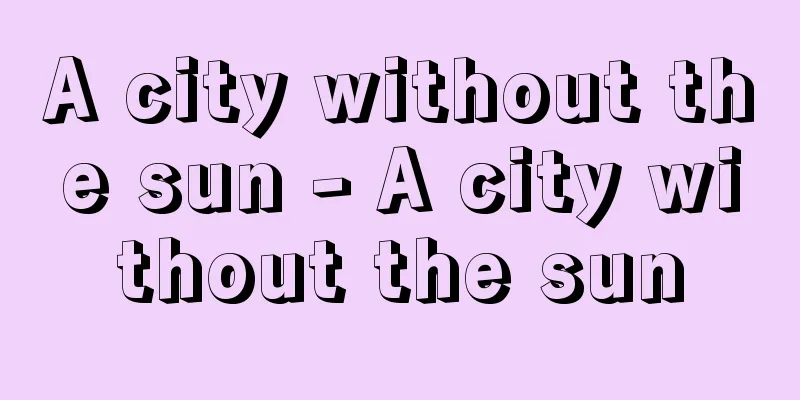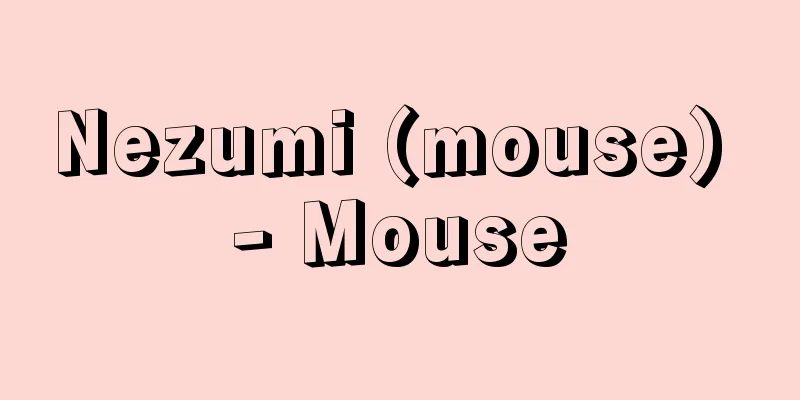Doyo - Doyo

|
One of the miscellaneous festivals in the calendar. In China, the five elements of wood, fire, earth, metal, and water were assigned to the four seasons of the year, spring, summer, autumn, and winter, but it was impossible to assign five elements to each season. Therefore, wood, fire, metal, and water were assigned to the four seasons of spring, summer, autumn, and winter, and earth energy was assigned to the last 18 days of each season. This is called doyo, which is an abbreviation of Saturday business. In the current calendar, the start of spring doyo, summer doyo, autumn doyo, and winter doyo occurs when the sun's apparent ecliptic longitude reaches 27 degrees, 117 degrees, 207 degrees, and 297 degrees, respectively, and the period lasts about 18 days, and when the doyo of each season ends, it is the beginning of summer, autumn, winter, and spring. Today, only summer doyo is used, and the first day of the ox after the start of summer doyo (around July 20th) is called "doyo ushi." [Toshio Watanabe] weatherMeteorologically, summer doyo corresponds to the clear, midsummer period from late July to early August, and is usually the hottest time of the year, with persistently muggy weather. Thunderstorms also occur frequently around this time. However, in recent years, reflecting climate changes, the weather during doyo varies greatly from year to year. There are many years in which the end of the rainy season is not as good as expected, with many cloudy and rainy days continuing until early August, and the scorching heat after the end of the rainy season does not last long, with temperatures dropping once August arrives and autumn winds starting to blow as early as the beginning of the month. It should not be forgotten that summer doyo is also the season when the mainland is more susceptible to the effects of typhoons. [Nemoto Junkichi] FolkloreThe third day of the summer Doyo season is called Doyo Saburo, and the weather on this day is used to predict the year's prosperity or misfortune. As this is the hottest time of the year, people hang out their clothes and books to air them out, a practice known as Doyo-boshi. There is also the custom of taking a medicinal bath called Ushi-yu on Ushi-no-hi, the Day of the Ox in the Doyo season, and eating grilled eel and loach soup to ward off the heat. In the Chugoku region, a custom known as Ushi-no-Gion, involves leading a cow into the sea. It has also long been said that medicinal herbs picked during the summer Doyo season have particularly strong medicinal properties. In the villages of Okayama Prefecture, there are cases where Doyo prayers are held to ward off summer epidemics. This is also called Doyo Nembutsu, and involves chanting prayers while rolling around a large rosary. In the Nishiyama district of Bitchu Town, Takahashi City, Okayama Prefecture, on the first day of Doyo, monks from temples come from the temples to pray for the safety of households and to send off insects, chanting prayers along the way and going from house to house while reciting the Heart Sutra. [Oto Tokihiko] [Reference] | | | |A nishiki-e from the Edo period depicting kimonos being hung out to dry. The door is open and the kimonos are hung on a clothes rack. As airing is done during the doyo period (18 days before the beginning of autumn), it is also called doyo-boshi or natsu-boshi. Utagawa Kunisada (Toyokuni III) "Twelve Months, Minazuki, Doyo-boshi" Triptych 1854 (Kaei 7) National Diet Library Airing out Source: Shogakukan Encyclopedia Nipponica About Encyclopedia Nipponica Information | Legend |
|
暦の雑節の一つ。中国では、1年春・夏・秋・冬の四季に、木・火・土・金・水の五行をあてようとしたが、四季に五つを割り当てるのはむりである。そこで春・夏・秋・冬の四季に木・火・金・水をあて、各季の終わり18日余に土気をあてた。これを土用といい、土曜用事を略したものである。現行暦では、太陽の視黄経がそれぞれ27度、117度、207度、297度に達したときが、それぞれ春の土用、夏の土用、秋の土用、冬の土用の入りで、その期間はおよそ18日間で、各季の土用があけると、立夏、立秋、立冬、立春である。今日では夏の土用だけが用いられており、夏の土用に入って(だいたい7月20日ごろ)、最初の丑(うし)の日が「土用丑」である。 [渡辺敏夫] 気象夏の土用は気象のうえからは7月下旬から8月上旬にかけての真夏の晴天時にあたり、例年は一年中でもっとも暑気が甚だしく、蒸し暑い天気が続く。また雷雨の発生もこのころに多い。ただし近年は気候の変動を反映して年による土用の天気の違いが大きい。梅雨(つゆ)のあがりが思わしくなく、曇雨天の日が8月上旬まで多かったり、また梅雨明け以後の猛暑は長続きせず、8月に入ると、気温が低下して早くも秋風が吹くといった年が少なくないのである。夏の土用は、本土では台風の影響を受けやすくなるシーズンであることも忘れてはならない。 [根本順吉] 民俗夏の土用に入った3日目を土用三郎といって、この日の天候でその年の豊凶を占った。このころは1年でもっとも暑いときなので、土用干しといって衣服や書物などの虫干しをする。また土用の丑の日(うしのひ)に丑湯といって薬湯に入ったり、夏負けしないためウナギの蒲(かば)焼きやどじょう汁を食べる風習がある。中国地方では、牛の祇園(ぎおん)といって牛を引いて行って海に入れる。また薬草は、夏の土用にとったものがとくに薬効があると、昔からいわれている。 岡山県の各村では、夏の悪疫を退散させるために土用祈祷(きとう)を行う例がある。土用念仏ともいって大数珠(じゅず)を繰り回して念仏を唱える。同県高梁(たかはし)市備中(びっちゅう)町西山地区では、土用入りの日に家内安全と虫送りの祈祷のため、寺から僧がきて道中念仏を唱えて家々を回り、『般若心経(はんにゃしんぎょう)』を読誦(とくじゅ)するという。 [大藤時彦] [参照項目] | | | |着物の虫干しのようすを描いた江戸時代の錦絵。戸を開け放ち、衣紋掛けを用いて着物を吊るしているのがわかる。虫干しは、夏の土用(立秋の前の18日間)に行われることから、土用干し、夏干しともいわれる。歌川国貞(3世豊国)画『十二月ノ内 水無月 土用干』 三枚続 1854年(嘉永7)国立国会図書館所蔵"> 虫干し 出典 小学館 日本大百科全書(ニッポニカ)日本大百科全書(ニッポニカ)について 情報 | 凡例 |
<<: Doyo Newspaper - Doyo Newspaper
Recommend
Jacaranda - Jacaranda
A general term for the genus Jacaranda in the Big...
Qilian Mountains
A mountain range on the border between Qinghai an...
Shugakuin Imperial Villa
This villa is located at the western foot of Mt. H...
Japanese waxwing (English spelling)
...It breeds in the northern subarctic regions of...
Sadayakko Kawakami
Actress. Her real name was Oguma Sada. She was bo...
Mnesikles (English spelling)
Greek architect active in the second half of the 5...
Dutch Trading Post
In the early Edo period, the Japanese branch of t...
Popping
These are footwear worn by young girls and unmarr...
Heart Sutra - Hannyashingyo
A Buddhist scripture. Its original name was Prajñ...
Sales - eigyō
Subjectively, it means the repetition and continu...
Aveling, E.
…Translated the work “History of the Paris Commun...
Laufer
American orientalist and anthropologist. Born in C...
Fleischer, R.
…American animation brothers who brought popular ...
Ishige Tsumugi
…The central settlement of Ishige flourished in t...
Hidden field - Kakushibata
…Rice fields that farmers cultivate while hiding ...









